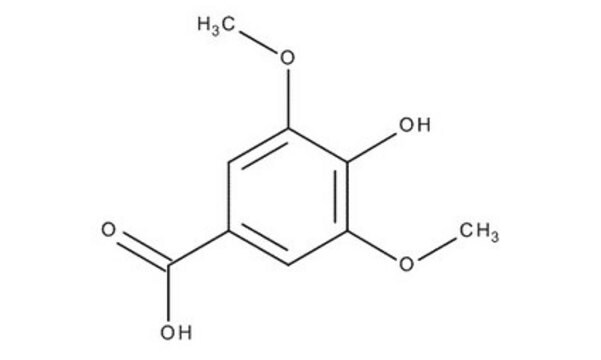The determination of melting point largely depends on testing conditions, such as equipment type, the rate of temperature increase, the diameter of the glass tube, etc. These products are not tested for melting point. These products are from different brands and melting point values are taken from different literature sources.
8.22029
3,4-Dihydroxycinnamic acid
for synthesis
Synonym(s):
3,4-Dihydroxycinnamic acid, Caffeic acid
About This Item
Recommended Products
Quality Level
Assay
≥98.0% (HPLC)
form
powder
mp
234-237 °C (decomposition)
storage temp.
2-30°C
SMILES string
Oc1c(ccc(c1)\C=C/C(=O)O)O
InChI
1S/C9H8O4/c10-7-3-1-6(5-8(7)11)2-4-9(12)13/h1-5,10-11H,(H,12,13)/b4-2-
InChI key
QAIPRVGONGVQAS-RQOWECAXSA-N
Related Categories
Analysis Note
Identity (IR): passes test
Signal Word
Warning
Hazard Statements
Precautionary Statements
Hazard Classifications
Carc. 2
Storage Class Code
11 - Combustible Solids
WGK
WGK 3
Flash Point(F)
Not applicable
Flash Point(C)
Not applicable
Certificates of Analysis (COA)
Search for Certificates of Analysis (COA) by entering the products Lot/Batch Number. Lot and Batch Numbers can be found on a product’s label following the words ‘Lot’ or ‘Batch’.
Already Own This Product?
Find documentation for the products that you have recently purchased in the Document Library.
Customers Also Viewed
-
Why are the melting points of caffeic acid 8220290010 (listed as 3,4-dihydroxycinnamic acid) and caffeic acid C0625 so different? They are both listed as >98% (HPLC).
1 answer-
Helpful?
-
Active Filters
Our team of scientists has experience in all areas of research including Life Science, Material Science, Chemical Synthesis, Chromatography, Analytical and many others.
Contact Technical Service












